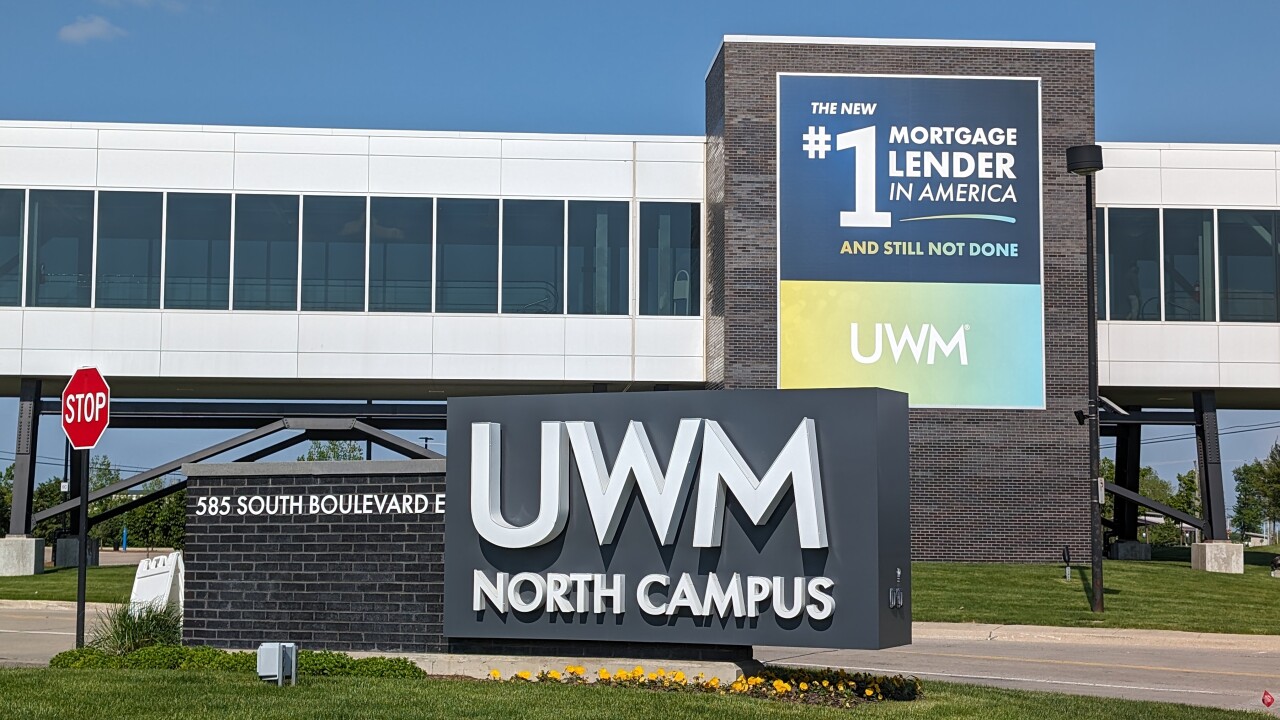
Some of the largest players in mortgage warehouse lending boosted their commitments last year as a shrinking market has intensified competition for originators' business.
Wells Fargo posted a 15% increase and Bank of America an 18% increase in the dollar volume of warehouse lending commitments as of Dec. 31 compared with a year earlier, according to mortgagestats.com. Branch Banking & Trust posted a much smaller increase in commitments; all of the other top 10 warehouse providers showed declines.
"As warehouse lending volumes drop, there is always the tendency to get more aggressive in fee structures. We've watched this repeat over and over again," says
To be sure, warehouse line usage is down tremendously on a year-over-year basis and it may be only that the dollar amount of commitments available from the top banks has yet to catch up to the decline. Wells Fargo did not return a request for comment. Bank of America, which houses its warehouse lending unit in its Merrill Lynch subsidiary, declined to comment.
There is a major bidding war going on due to decreased loan origination volume, says Ruth Lee, executive vice president at Titan Lenders Corp., an outsource back-office services provider which also operates a correspondent aggregator.
"Warehouse lenders are used to larger profits and margins with relatively low risk. Now that volumes are declining, warehouse lenders are feeling the pinch and responding with more aggressive client retention moves," Lee says. "For example, one lender may try to compete by tweaking their price in a bit to steal another lender’s client. That client will go back to their lender and see if they can get a counteroffer."
There is generally a lot of brand loyalty in warehousing. Originators are reluctant to change their relationships (although many have additional lines from other providers for risk management needs; contractual arrangements governing which mortgage products can be funded from the line can also require originators to use more than one provider).
"I think there has been a move to making warehouse line money more of a commodity, and lender loyalty is more of a function of its stability and security of supply in the post-2008 aftermath," Lee says.
Lykken has heard that warehouse line outstandings are down in the area of 40% to 50% at some firms. Of the six companies which mortgagestats.com has this data on, Community Trust Bank showed the smallest year-over-year decline in outstandings, by 21%. BB&T had the second-smallest drop, 49%. Flagstar reported the largest drop at 71%.
Of course, much has changed since the Dec. 31 snapshot of commitments. When the Federal Reserve announced last year it would taper asset purchases, interest rates fell and originations declined. But then investors became comfortable with the new environment and rates fell, bringing refinancings back into the market.
In recent weeks, application activity has declined again. With outstandings falling, commitments will eventually decline as originators elect not to renew their facilities.
After years of mortgage warehouse credit availability being scarce, the entry of new players like Silvergate Bank and the return of Impac Mortgage Holdings have created more competition.
Furthermore, some lenders are being hit with non-use fees by their warehouse provider and thus these mortgage bankers are voluntarily reducing the amount of credit available to them, Lykken says.
Fewer loans being originated is just part of the equation, adds Titan Lenders' CEO and president, Mary Kladde.
"Wells, B of A, and BB&T to a large extent do business with the larger players in the middle market. These larger players are gaining market share in the contraction and have the capital to survive the downturn in volume," she says. "The compression in the market, combined with the fact that the Wells, B of A, and BB&T customer base typically have higher net worth valuations that allow them to stay the course, ultimately contributes to their gain in market share without much effort."
There are ways for warehouse lenders to develop business even as originations are shrinking, says Bob Rubin of the Business Loan Connection consulting firm.
These firms can provide lines of credit to emerging mortgage bankers. They can offer servicing-advance lines as well as provide financing secured by mortgage servicing rights.
They can make subordinated loans. They can also allow their clients to issue subwarehouse lines of credit to other mortgage bankers with which they have a correspondent relationship, Rubin says.
The money is there to finance the right product types—and today that means loans that fit the regulatory definition of a qualified mortgage. Warehouse lenders have not relaxed any restrictions which were put in place after the mortgage bust about what types of products originators are allowed to fund from the lines.
"There is lots of warehouse credit for qualified mortgages, tons of availability and it is getting more competitive again. We're seeing more availability of dollars coming into the market, but not anything close to becoming more aggressive on the type of products" warehouse lenders are willing to fund, Lykken says.
"If you are doing QM there is lots of credit and you can negotiate with your warehouse lender," he says. "If its non-QM, you're not going to get an audience with anybody."






